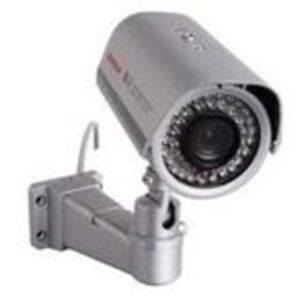Video surveillance has come a long way. Cameras are everywhere. They are in airport terminals, parking lots, taxi cabs – the list goes on.

Data from video sources alone has grown at an astronomical rate. In turn, there has been an increasing need for video analytics to make sense of data, understand it and respond to a query or automatically based upon pre-programmed requests.
Video has proven to be an effective forensic tool to analyze data related to a bank robbery or other criminal activity. But we are entering a new age in our video society. According to the Video Analytics blog, the new challenge is about how the data can be used as a way to prevent crime more than anything else.
This series on data security and privacy is brought to you by IBM. Find out more about how IBM is creating a Smarter Planet.
What this requires is a system that aggregates data from multiple points such as fixed camera, sensors and other devices. That data in turn has to be analyzed so a quick decision can be made. From Video Analytics:
“In a bottom line way, this means that a criminal or a terrorist may leave certain clues before an incident, such as a car parked too long in a prohibited area, unattended objects or stolen license plates. Systems that relay information to authorities in real-time can possibly help stop a crime in progress or even before it takes place.”
However, as the demand for video analytics increases, so too do questions about specific applications and how best to implement this technology. One of the recurring questions is: Where is the best place for video analytics: in the camera, or as software embedded in the servers? There are also questions about what qualifies as truly intelligent video analytics and open architecture and what makes the most sense in the adoption process – to purchase a system with analytics built in, or to have it added later on as the need arises.”
Where the analytics reside really depends on the situation. For simple applications that may mean the analytics can be on the camera. As Video Analytics points out, the camera may only have to be able to tell the difference between a bird and a human. If that is the case, then embedded analytics on the camera should suffice.
But when it gets more complex, there will be the need to access a database that can tell if a person in a parking lot late at night should be there or not. To do that requires that the system access several databases. In that respect, the system would have to be processing data on the server with an analytics application.
For most companies, the most basic technologies do the job. So much so that collecting the video data can even be a service that people can subscribe to, paying on a per-camera basis.
It has giving rise to cloud-based offerings. Video Surveillance as a Service (VSasS) means that a company pays for surveillance but not the hardware. Camera are installed on the site and streamed to the customer through the Web. In some cases, it’s possible to use a hybrid approach with data storage being done on premise.
CSO Online writes that potential customers need to know about the basic terms before they begin looking at these types of services:
- Hosted video: Offsite recording: video generated onsite is transferred on the customer’s WAN to the provider’s data centers, where it is managed and stored.
- Managed video: Onsite recording: video is stored at the customer’s site and is remotely managed by the provider.
- Combination of hosted and managed: Video is streamed to the provider’s site but also stored on the customer’s premises in one of many ways, such as on the cameras, on an appliance or on a network-attached storage (NAS) device.
Restaurants, retail chains and apartment complexes are the typical users of these services but they are starting to be used by larger organizations such as telecommunications companies, banks and manufacturers.
Video analytics are sometimes part of these offerings but the services are very basic. In truth, most of the analytics technologies for these services are still quite immature. Casinos are some of the pioneers in this field. They are looking for those subtle movements that may tell if a person is cheating at the card table. The technology is not quite there yet. And so, like most businesses, casinos trust video analytics for detecting anomalies in places like the liquor storage area.
Analytics tools are getting better. But for now, their best use is for basic applications.










